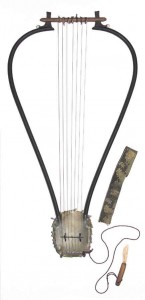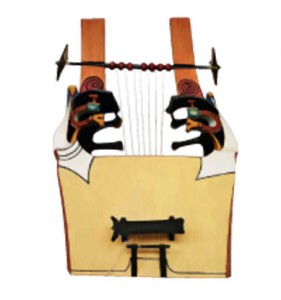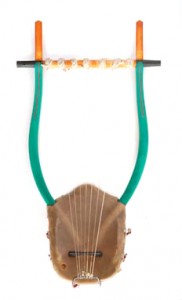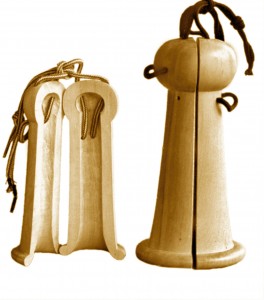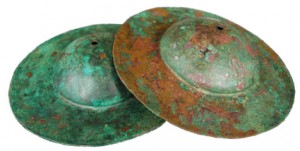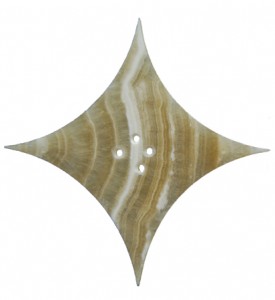sonorous and precious
the carefully reconstructed instruments
Since 20 years the instrument maker Paul J. Reichlin has been working on the field of music archaeology, together with Conrad Steinmann. He is mainly focused on Greek instruments of the classical period about 500 BC – auloí, bárbitos, kithára, l ra and krótala – as well as on Egyptian instruments of the New Kingdom about 1300 BC. His work is highly esteemed and recognitioned on this field as show invitations to international symposia (Cairo 2003 and 2007) and congresses (ISGMA), lectures at diverse universities and the grant of the Stavros Niarchos Foundation. As a violin maker he has being occupied with historical string instruments since his beginnings. He is well reputed both as a restorer of old precious instruments and as maker of new instruments such as viola da gambas for famous musicians as e.g. Jordi Savall and August Wenzinger etc. His replicas are always, as are the original ones, richly ornamented and made from precious materials.
Aulós
The Aulós is the Greek wind instrument. It has always been played as a double instrument regardless of lengths, tonalities and materials. The playing techniques follow double blown instruments still being played in the area of the Mediterranean (e.g the Egyptian Arghoul) with circular breathing and finger articulation. The instruments employed are exact replicas of preserved instruments in the British Museum of London, the Archaeological Museum of Paestum/Southern Italy and the Egyptian Museum in Berlin.
Bárbitos
The Bárbitos is a string instrument on which singers accompanied themselves during festivities. Seven long strings, widely swung side arms and a carapace as sounding box are characteristic for its construction. The instruments used by the ensemble Melpomen are based upon fragments preserved in the museum of Paestum/Southern Italy and upon attic vase paintings of about 500 BC. The materials used and the making are highly accurate.
Kithára
The kithára, again with seven strings, is the accompanying instrument of professional singers. A big hollowed resonance box with rich ornaments show that it must have been a true luxury instrument. The instrument played by ‘Melpomen’ follows attic vase paintings from about 500 BC which show the Kithara from all sides. The playing technique is similar to the Barbitos where the player’s right hand uses a plectrum to strike the strings whereas the fingers of the left hand stop or pluck the strings.
Lýra
The Lýra is definitely the embodiment of and often also the generic term for Greek stringed instruments. Its importance is reflected today in the term ‘lyric poetry’, which actually means poetry sung to the accompaniment of a lyre – or any other stringed instrument. However, in everyday Greek life, the seven-stringed Lýra was used almost exclusively in music education. The Lýra we use is a meticulous replica of the only surviving instrument from the beginning of the 5th century BC, which since its discovery has been kept in the British Museum (in London).
Týmpanon
The Týmpana are frame drums of various size comparable to those still being played in formerly Greek influenced regions.
Krótala
The krótala are wooden clappers of different size played pair wise. They have been used to accompany dances mostly together with an Aulós. They produce a dry and hard sound comparable to the Spanish castanets.
Kýmbala
The Kýmbala are bronze cymbals made in various sizes. The instruments used by ‘Melpomen’ are copies of artefacts from early 1st millennium BC (private collection) and from 500 BC (National Museum Athens), made by Markus Uhl.
Rhómbos
The stone Rhómbos is a kind of antique wind machine. Our copy of an original diamond-shaped rhómbos from about 480 BC is made by Thomas Brupbacher.


